Rewritten from the ground up, AirMessage Server 4 makes AirMessage even more powerful and capable. Now running native code, AirMessage Server consumes less power and runs faster than ever before.
Deeper system access lets AirMessage users create group chats, send attachment files, as well as make and receive FaceTime calls on macOS Monterey. Remote updates make it easy to stay on top of new features and security fixes from anywhere.
All this, available for Intel and Apple Silicon Macs running macOS 10.10 Yosemite or later.
AirMessage Server 4
Let’s bring some good news into 2022, by making iMessage and FaceTime even more powerful across Android and the web!
With full access to all the advanced capabilities of macOS, AirMessage Server 4 realizes what I’ve been wanting to do with AirMessage for a while - a more streamlined experience, and more powerful features.
Built with macOS Monterey in mind, AirMessage Server becomes faster, more power efficient, more secure, and more capable.
Fast and friendly
The first thing you’ll notice when you start up AirMessage Server is the refreshed UI. AirMessage Server now uses fully native macOS UI components, so it should feel right at home with all your other Mac apps.
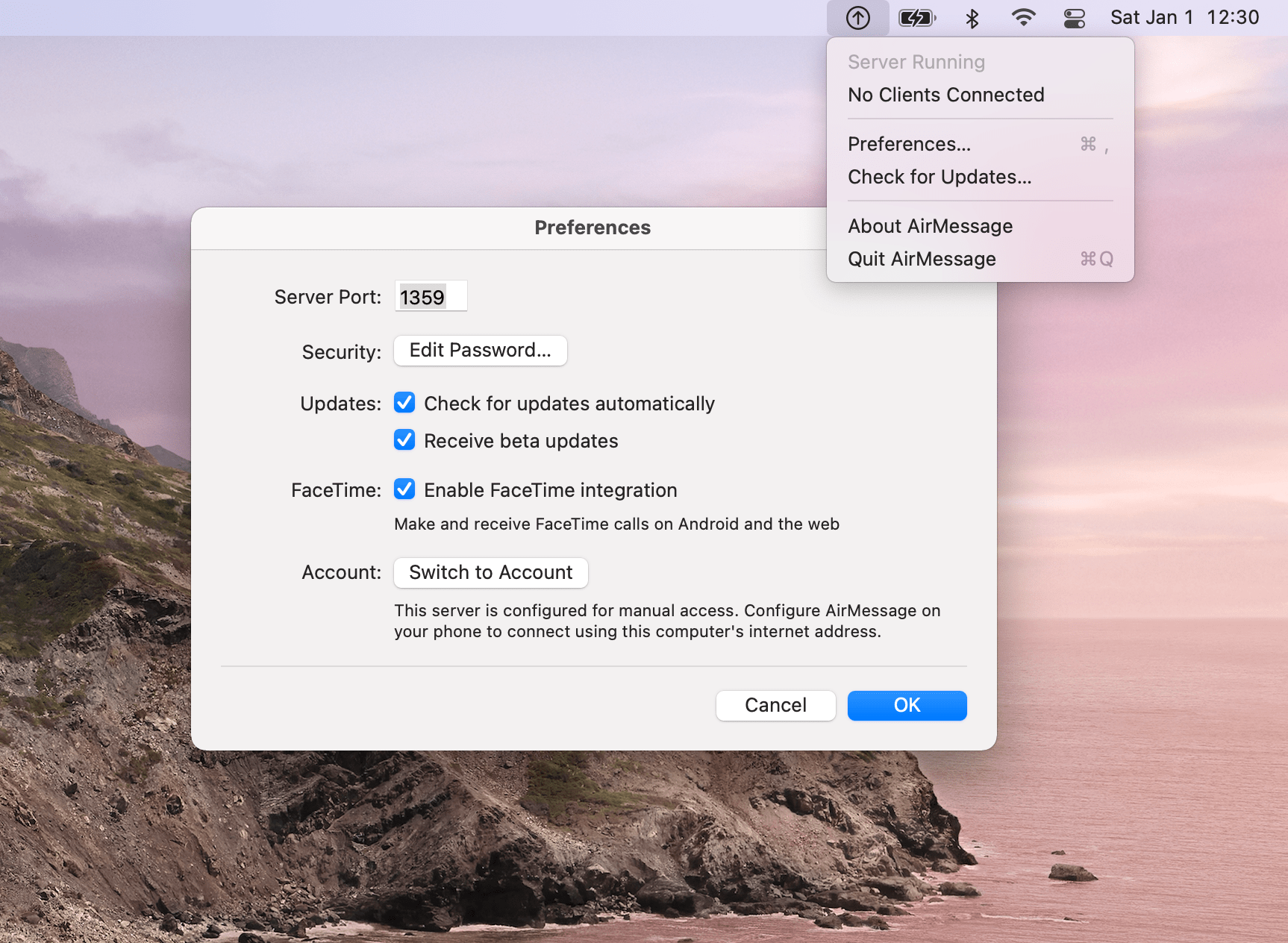
It’s also easier to get AirMessage set up. Digging through menus to grant Full Disk Access and Automation access can be daunting and tiresome, so now it’s as easy as the click of a button and a drag-and-drop.

With the help of Apple’s software foundation, AirMessage Server also brings big gains to performance and efficiency. Opening the AirMessage app will cause the applet in the menu bar to appear instantly. Compared to the last version, AirMessage Server 4 is up to 3x more memory-efficient, twice as CPU-efficient, and twice as power-efficient.
Say hello to FaceTime
AirMessage Server 4 allows you to both make and receive FaceTime calls, across Android and the web.
By combining FaceTime links with macOS system integration, AirMessage Server is able to make or accept calls on your behalf, then automatically forward the call to a FaceTime link that can be used on any device.
This results in a seamless FaceTime experience on Android, where an incoming call will cause your phone to ring. On the web, FaceTime links are handled by your web browser.

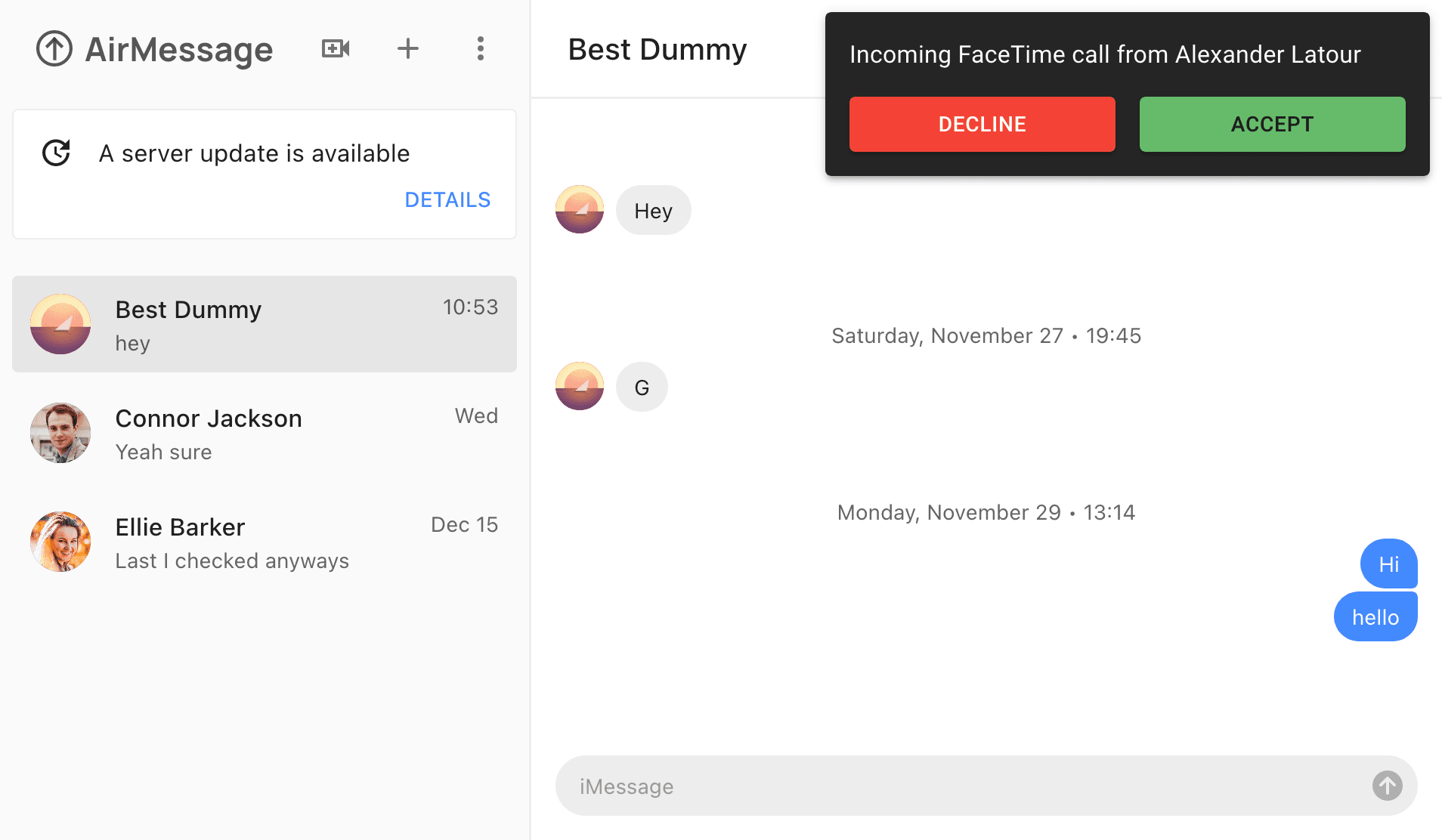
To use FaceTime with AirMessage, you’ll need a computer running macOS 12 Monterey or newer with the system language set to English, French, or Japanese, and a camera available to use. Then, open AirMessage’s Preferences window, and select the box for Enable FaceTime integration.
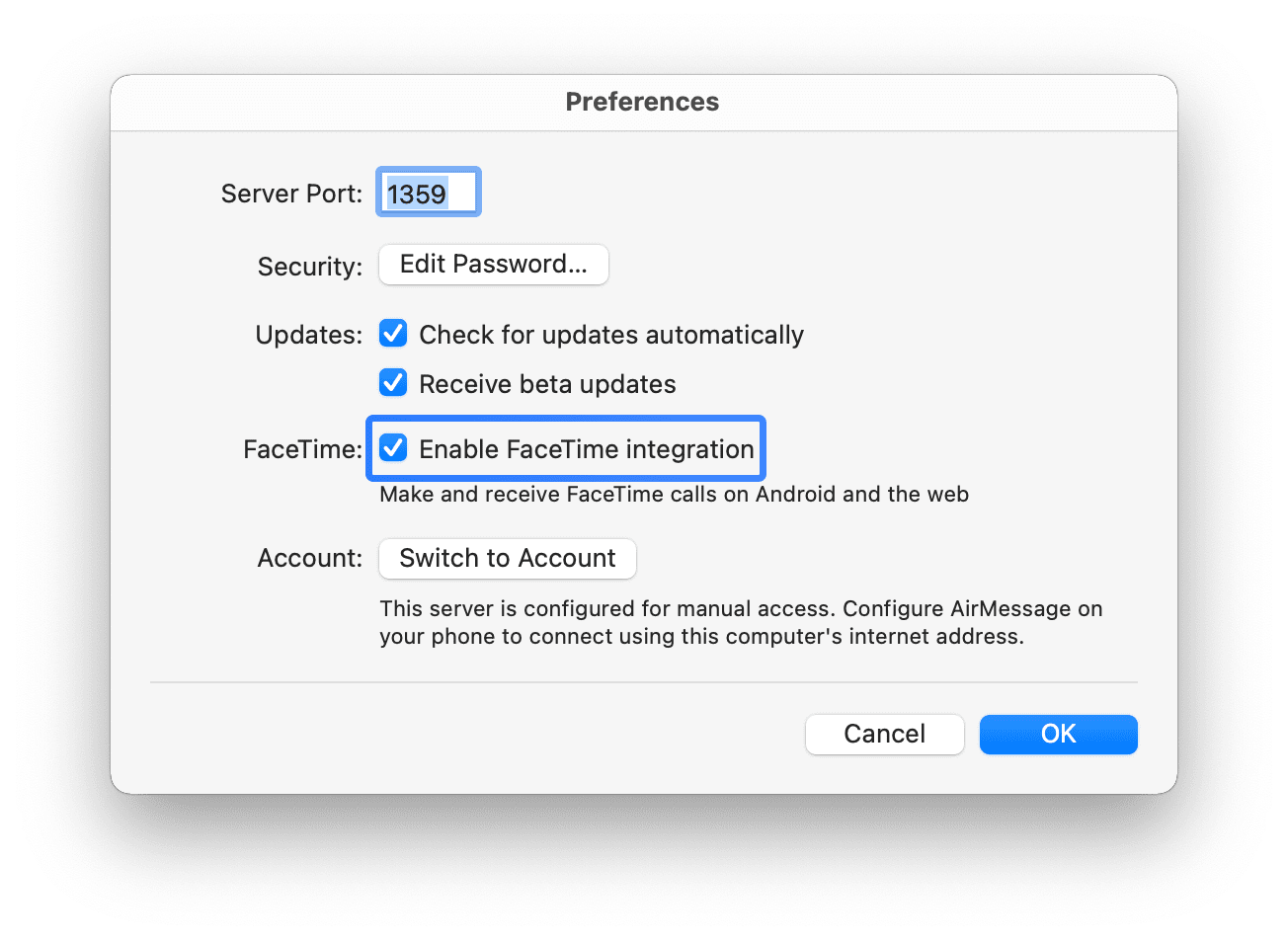
Please note that AirMessage’s integration with FaceTime is currently experimental, and does not represent a complete experience. This feature may be removed at any time.
Safe and sound
AirMessage Server 4 goes to great lengths to make sure that your data stays yours. On top of end-to-end encryption, here are a few other additions that make this the most secure version of AirMessage Server:
- AirMessage Server 4 ships with hardened runtime, which makes it impossible for malicious apps to hijack and take control of AirMessage.
- Your passwords are stored in Keychain, which performs hardware-backed encryption to protect against compromises.
- All sign-ins happen through Apple Authentication Services or Safari, which makes it so nobody (not even AirMessage) can capture your credentials as you sign in to AirMessage Cloud.
However, AirMessage can only do so much for you to protect your messages, which is why AirMessage Server 4 has new features to help you remain in control.
Want to see who’s connected to your server? Selecting “connected clients” from the menu will open a list that displays information about all active connections.
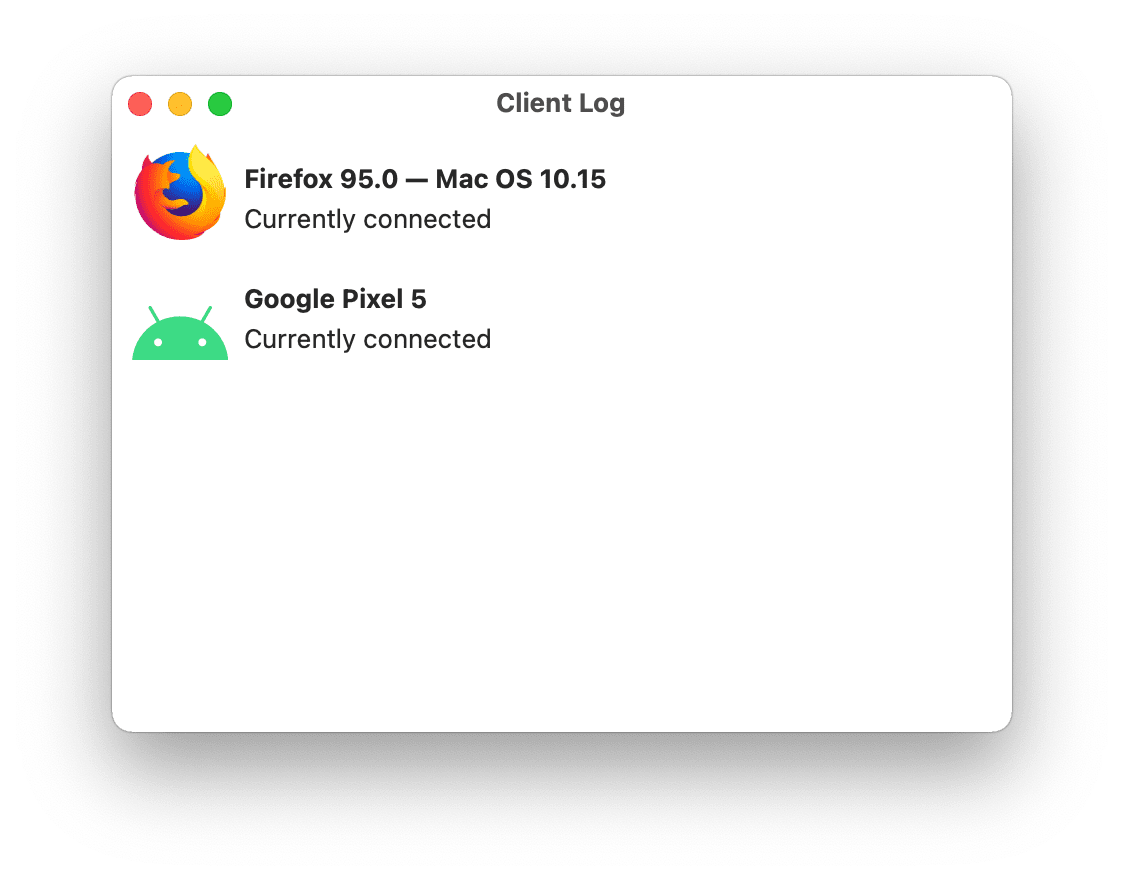
Latest and greatest
This won’t be the last release of AirMessage Server, and staying on the latest version is important for security fixes and feature updates.
From both your Android phone and the web, you’ll be notified when a new update is available, and will be able to install the update without touching your Mac.
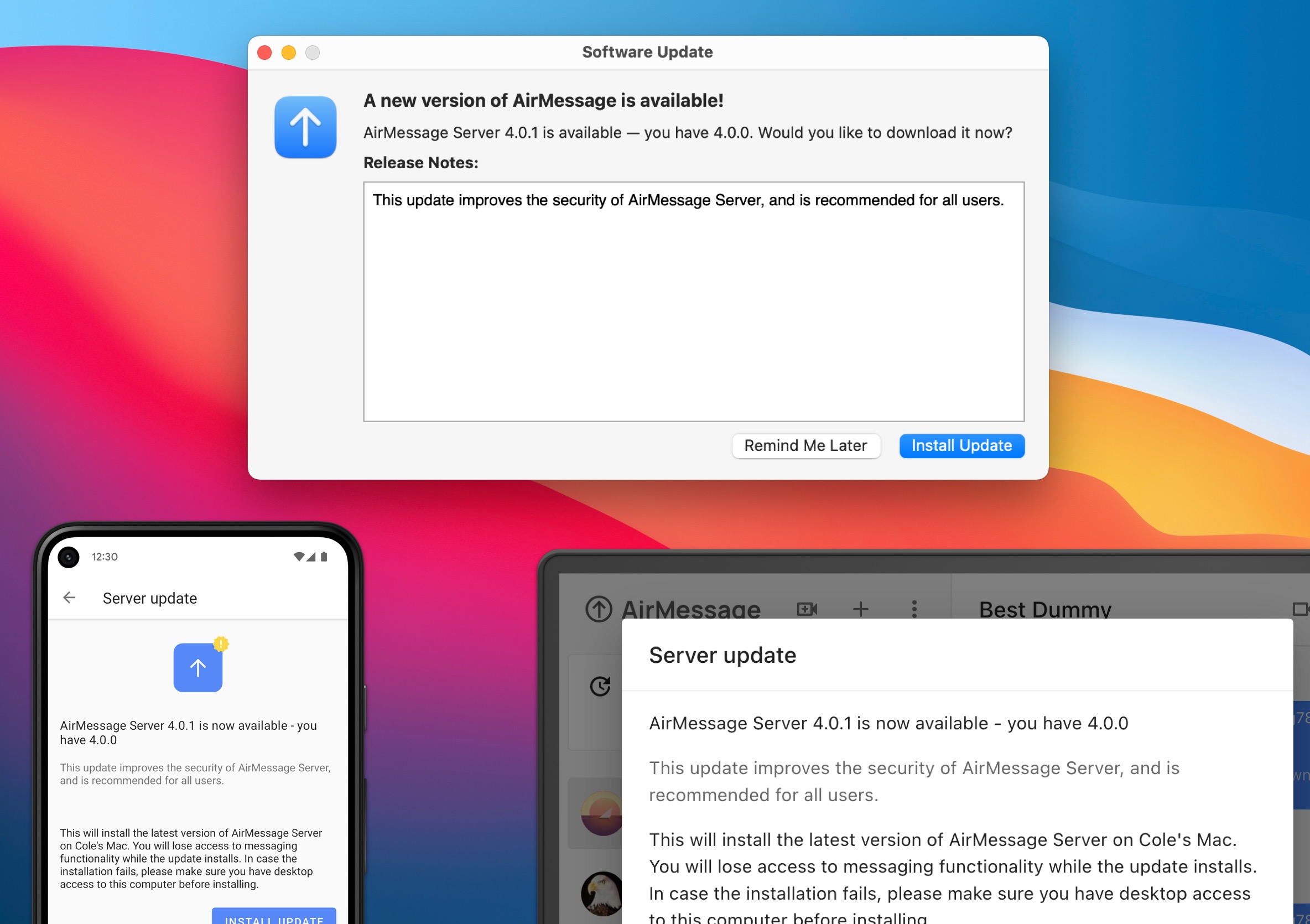
Making up for lost features
AirMessage Server 4 is capable of using new methods to work around limitations introduced in macOS 11 Big Sur and macOS 12 Monterey.
Using any version of macOS between 10.10 Yosemite and 12 Monterey, AirMessage Server can once again send attachment files and create new iMessage group chats across Android and the web.
Here’s an updated table feature support:
| Feature | Supported macOS versions1 |
|---|---|
| Send and receive messages | 10.10 Yosemite - 12 Monterey |
| Send and receive attachments | 10.10 Yosemite - 12 Monterey |
| Receive tapbacks, stickers, send effects | 10.12 Sierra - 12 Monterey |
| Receive read receipts | 10.10 Yosemite - 12 Monterey |
| Create new conversations | 10.10 Yosemite - 12 Monterey2 |
| Make and receive FaceTime calls | 12 Monterey |
1. Both Intel and Apple Silicon-based Macs have access to the same features
2. Text message forwarding group chats cannot be created on macOS 11 and 12 (iMessage chats and direct text message forwarding chats can still be created)
Get the update
The alpha version of AirMessage Server 4 is available today! It will be released to users of the beta channel once it is confirmed to be compatible with a wider range of Macs.
You can use this link to download AirMessage Server 4.
Please note that if you’re using AirMessage for Android, you must join the beta channel for compatibility with AirMessage Server 4: https://play.google.com/apps/testing/me.tagavari.airmessage.
I’m excited to finally be able to release this update. Your feedback is important, so be sure to submit any you have on AirMessage’s subreddit, or via E-Mail!
